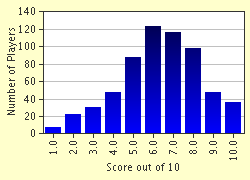Quiz Answer Key and Fun Facts
1. How many pairs of major nerves originate in the brain and are known as cranial nerves?
2. Which cranial nerve provides the human with the ability to smell a wide variety of odors?
3. Four of the five basic taste sensations that the human brain can identify include sweet, sour, umami and salt. What is the fifth basic taste sensation that the human can identify?
4. Which cranial nerve receives sound wave stimuli from the small bones of the inner ear and interprets this in the brain as hearing. It also controls human balance?
5. What is tic douloureux more commonly called in the English language?
6. What is the name of a condition that involves the facial nerve and causes weakness and drooping of the facial muscles?
7. What is the name of the area where the optic nerve and retinal blood vessels enter the back of the eye?
8. What is the disturbance in vision that occurs when distant rays of light pass through the lens and are focused in front of the retina?
9. Which serious anomaly of the optic nerve can occur in the newborn child of a mother addicted to alcohol or illegal drugs?
10. Which is the longest cranial nerve?
Source: Author
YOMD39
This quiz was reviewed by FunTrivia editor
gtho4 before going online.
Any errors found in FunTrivia content are routinely corrected through our feedback system.

